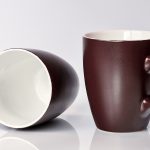That use of a mark is merely creative expression is one of the primary defenses to an allegation of trademark infringement.
Creative expression cannot constitute trademark infringement because is not commercial use.
Why does that make a difference?
This Article will discuss creative expression vs. trademark infringement in terms of the statutory purpose of trademark law. It will also discuss the legal test used to determine creative expression in infringement disputes.
Trademark Registration: Commercial vs. Creative Expression
The purpose of trademark registration in the United States is to provide a registry of “marks” used in trade.
“In trade” means that a mark is used for a commercial purpose. That is, it means that the mark is used in association with a product or service being sold across state lines.
A “mark” is a business name, product name, slogan, logo, or some other identifier of the source of a product or service. For example, that familiar cursive script reading COCA COLA on your can of pop identifies its source as the Coca Cola Bottling Co. of Atlanta, Georgia.
That cursive script is a design mark (logo) registered as a trademark by the Coca Cola Bottling Co. The ® registered trademark symbol on the can beside that script tells you that this is the case.
Because the Coca Cola cursive script is used in association with the sale of pop (or soda, if you’re in New York City or elsewhere on the east coast), it can be registered as a trademark. That is, because its use is commercial, it is registrable as a trademark.
Alternatively, if the script were painted on a canvas, framed, and hung in an art gallery instead, it would not serve a commercial purpose. It would be art. (Not good art, but still.)
Creative Expression: Not Infringement
In other words, it would be a form of creative expression. (This is notwithstanding the fact that a painting can be sold for money.)
A mark used for a creative, non-commercial purpose cannot be registered as a trademark. Likewise, it is a defense against allegations of trademark infringement. It is a defense to infringement claims because consumers are not confused into buying a knock-off product by creative expression.
A painting of the Coca Cola cursive script hanging on the wall of an art gallery would not cause a consumer to believe that the art gallery sells pop.
Trademark infringement requires consumer confusion. We’ll explain below.
What Is Trademark Infringement?
Under the US Trademark Act (“the Lanham Act”), trademark infringement occurs when:
- The use of a trademark
- In connection with goods or services
- In a manner that is likely to cause consumer confusion or mistake
- About the source of the goods or services.
The “in connection with goods or services” requirement is crucial with regard to defenses invoking creative expression.
If a use is “creative expression,” it is not a use in connection with goods or services. It is not likely to cause consumer confusion or mistake about the source of goods or services.
That being so, how do we know when a use constitutes creative expression rather than trademark infringement?
US Courts have elaborated a test for this question.
Creative Expression and The Rogers Test
The so-called Rogers Test is used by courts to determine whether a use is creative expression or trademark infringement.
The Rogers Test originates from the 1989 2nd Circuit Court of Appeals case of Rogers v. Grimaldi. In this case, the producers of a film entitled Ginger and Fred were sued by legendary Hollywood actress Ginger Rogers. Rogers alleged that the title of the film violated the Lanham Act in creating a false impression that she was involved with the making of the film.

For those too young to remember, the names “Ginger and Fred” strongly refer to Ginger Rogers and Fred Astaire, Rogers’ even more legendary Hollywood acting and dancing partner.
Regardless, the court in that case found against Ms. Rogers. The court held that the use of the term “Ginger and Fred” was creative expression. The title of a creative work would not, the court held, constitute trademark infringement unless it misled consumers as to source of the content of the work or had no artistic relevance.
Thus, the Rogers court created a two-prong test for determining whether a use is creative expression or trademark infringement. A use is non-infringing creative expression when:
- The title of the work has some artistic relevance to the underlying work;
- The title is not explicitly misleading as to the source of the content of the work.
When Is Use Trademark Infringement or Creative Expression?
As with most legal “tests,” the Rogers Test has imperfectly been applied to the facts of specific disputes.
Generally, in applying the Rogers Test, courts will review a variety of factors to determine whether a use is creative expression or not.
These factors include:
- Whether the senior and junior users use the mark to identify the same or similar goods or services.
- Whether the junior user has added its own expressive content to the work beyond the mark itself.
- Whether the timing of the junior use suggests a motive to capitalize on the popularity of the senior user’s mark.
- The extent to which the mark is artistically related to the underlying work, service, or product.
- Whether the junior user has issued any statement to the public or engaged in any conduct evidencing a non-artistic motive.
- Whether the junior has made any private statement or engaged in private conduct suggesting a non-artistic motive.
Essentially, the Rogers Test attempts to balance the rights of trademark owners with the First Amendment free speech rights inherent in creative expression.
The Rogers Test for Creative Expression in the 6th Circuit Court of Appeals
The Rogers Test has been adopted by the 6th Circuit Court of Appeals. This Circuit includes Michigan, Ohio, Kentucky, and Tennessee.
In the 6th Circuit, the court adopted the Rogers Test in 2003 in the case of Parks v. LaFace Records, a case filed by the civil rights pioneer Rosa Parks. Ms. Parks had won, at the district court level, a motion for summary judgment against the creators of a song utilizing her name.
On appeal, the 6th Circuit reversed, remanding the case for trial to be determined by a finder of fact—and not on summary judgment. The (trademark infringement) issues to be resolved on remand were:
- Whether the song bearing Rosa Parks’ name had any artistic relevance; and
- Whether the song’s title was misleading in terms of its content.
The court stated:
Application of [the Rogers Test] involves a recognition that Rosa Parks has no right to control her image by censoring disagreeable portrayals. It also involves a recognition that the First Amendment cannot permit anyone who cries “artist” to have carte blanche when it comes to naming and advertising his works.
The Rogers Test: Recent Developments
Other Circuits have continued to modify the Rogers Test. Creative expression and First Amendment guarantees have received greater emphasis in some Circuits’ application of the Test than in others.
In particular, the 9th Circuit has broadened the Rogers Test greatly.
The 9th Circuit does not utilize a likelihood of confusion analysis in its application of the 2nd prong of the Roger Test, for example. Rather, the court expanded the concept of “creative expression” to include uses involving humor—even for the sale of ordinary commercial products.
As of this writing the 9th Circuit is in the process of considering whether use of a mark in association with the sale of dog toys constitutes creative expression.
The outcome of this case is to be determined. However, the possibility of creative dog toy expression represents a departure from the Rogers Test’s application in any other Circuit.
Creative Expression vs. Trademark Infringement: The Bottom Line
The bottom line is that creative expression remains a bona fide defense to allegations of trademark infringement. However, mileage will vary greatly depending upon the Federal Circuit in which a case is brought.
In Michigan and elsewhere in the 6th Circuit, the Rogers Test as originally conceive by the 2nd Circuit remains controlling, however.
Noble Path Trademark Law is a boutique US law practice located in Metro Detroit and assisting entrepreneurs, solopreneurs, artists, musicians, start-ups, and larger enterprises with robust intellectual property portfolios, and others in all industries with trademark registration, trademark renewal, trademark monitoring, and Office Action refusal response matters.
We offer virtual consultations, premium customer service, and the expertise you need to maximize your odds of trademark registration success.





